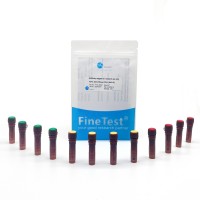Switching on Lineage Tracers Using Site-Specific Recombination
互联网
795
Methods to study the establishment and distribution of embryonic cell lineages have increased our understanding of the diverse events that comprise normal development. The resultant fate maps have also provided an important framework for systematically analyzing genotype-phenotype relationships uncovered by mutagenesis. Until recently, vertebrate fate maps have been plotted principally in avian systems because of the ease of manipulating tissue in ovo. These studies, using methods comprised of injecting retroviral (1 ,2 ) or fluorescent lineage tracers (3 ) or of grafting quail cells into chick embryos (4 ), have provided the core of what we know about vertebrate development. In contrast to chicken embryos developing in eggs, mouse embryos developing in utero are much less accessible, making the established tracing methods significantly more difficult. To circumvent these difficulties, noninvasive methods have recently been developed to genetically activate lineage tracers in mice using site-specific recombination (5 ,6 ).






